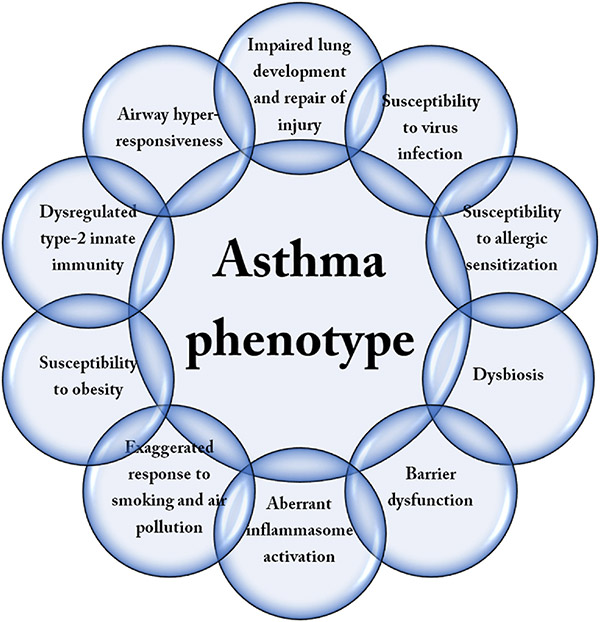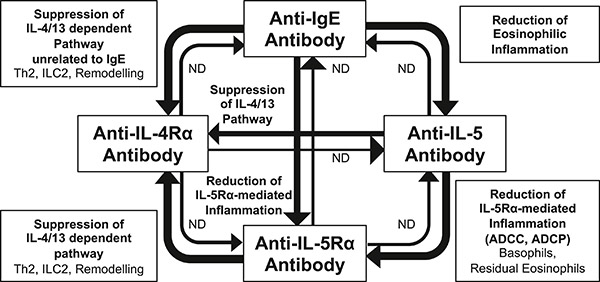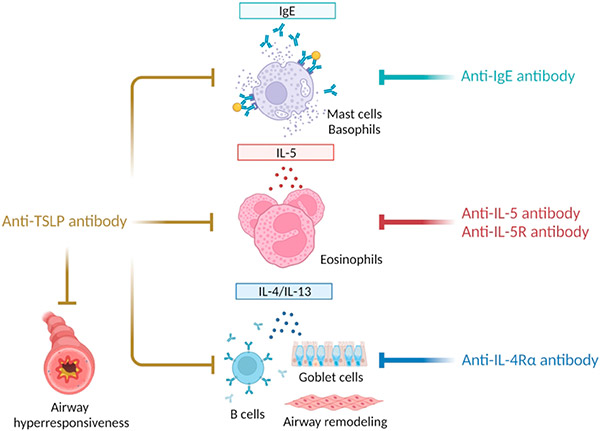Volume 72, Issue 1 (January 2023)
Review Series: Rapid progress in molecular targeted therapy for allergic diseases
Biomarkers levels are related to the endotypes of each patient. Endotypes, the molecular networks that arise in response to individual genetic and environmental factors, determine the phenotype of the patient. A key feature of asthma genome studies is their potential to reveal the molecular pathways that lead to the formation of patients’ specific phenotypes. Hizawa provides a review entitled “The understanding of asthma pathogenesis in the era of precision medicine,“ discussing the interaction between genetic and environmental factors in the formation of asthma phenotypes. Understanding endotypes can be expected to lead to appropriate development and implementation of therapeutic strategies, to predicting disease onset from an early stage, and to establishing preventive strategies.
As for current treatment of severe asthma, biologics targeting IgE, IL-5, and IL-4/IL-13 are available. Although randomized controlled trials have produced important clinical evidence, a large portion of real-world patients with severe asthma would have been excluded from those trials due to the requirements for airflow obstruction, bronchodilator reversibility, and smoking history. There is a growing body of information about the real-world effectiveness of those drugs, including long-term efficacy and safety. Nagase, Suzukawa, and Matsunaga et al. review these findings in “Biologics for severe asthma: the real-world evidence, effectiveness of switching, and prediction factors for the efficacy.“Although blood eosinophil counts and FeNO are serving as prediction markers for current biologics, emerging clinical or biological predictors are also reviewed. Additionally, as we now have multiple biologic options and the eligibility for biologics in clinical practice is overlapping, recent reports concerning the impact of switching or discontinuation of biologics are also reviewed.
TSLP is an epithelial cell-derived cytokine that plays an important role in the formation of type 2 inflammation via both innate and acquired immune cascades. Tezepelumab, which inhibits the action of TSLP, is the latest biologic for asthma. To date, currently available biologics have mainly targeted type 2 inflammation. However, recent studies are suggesting that tezepelumab is expected to be effective in patients with asthma, regardless of the phenotype. Kurihara and Kabata et al. review the results of clinical trials in their article “Current summary of clinical studies on anti-TSLP antibody, Tezepelumab, in asthma” and discuss the differences between tezepelumab and other biologics.
Recently, the effectiveness of biologics has also been reported in comorbid eosinophilic airway/lung diseases with asthma. Chronic eosinophilic pneumonia, allergic bronchopulmonary aspergillosis/mycosis, eosinophilic bronchitis, and eosinophilic granulomatosis with polyangiitis share clinical features with eosinophilic asthma. As those diseases often recur when the corticosteroids are tapered, clinicians need a novel strategy for managing these refractory cases. Asano et al. review the standard approaches in their article entitled “Treatments of refractory eosinophilic lung diseases with biologics.” They also discuss the definition and prevalence of refractory diseases and the role of biologics in their management. Although the available data for those diseases are relatively limited, these studies provide insights into the pathophysiology of each disease.





